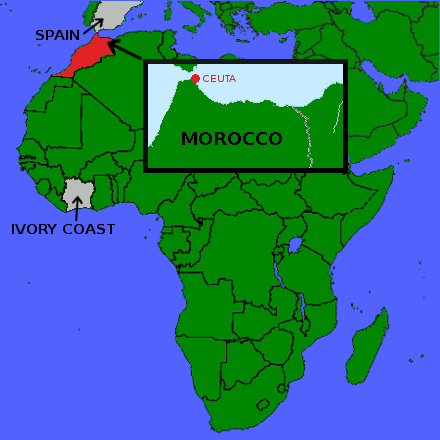
Circle the area on this map

B. Ceuta is a city on the northern coast of Africa, but as Spanish territory it is part of the European Union and allows easier travel through much of Europe. Every year, hundred of migrants jump 20-foot-high fences trying to get into Ceuta and subsequently Europe.
C. Geologically, the Canary Islands are part of the African continent. Politically and economically, the archipelago is part of Europe as an autonomous territory of Spain that uses the euro as its currency.
A. The most common current starting point for migrants sailing to Europe is Libya, where lawlessness and a mostly unpatrolled coastline has made life easy for people smugglers. The great majority of arrivals come from either sub-Saharan Africa or the Middle East.
D. People in Africa and the Mideast are fleeing war, economic decay and persecution over religion, ethnicity or politics. These factors are common in most migrations – from Central Americans fleeing to the United States to Rohingya people fleeing Myanmar for Thailand.